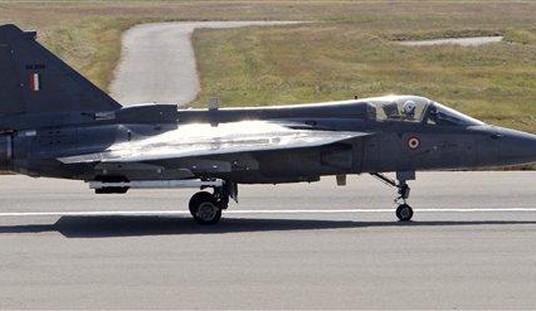For historical reasons, October has always been a notable month in space activities, and the one that just ended started off well.
On the 4th, the fifty-seventh anniversary of the launch of the first satellite, it was also the tenth anniversary of the winning of the Ansari X-Prize in 2004, when Burt Rutan’s SpaceShipOne flew into space for the second time in two weeks. There was a celebration of the anniversary on the date in Mojave, California, where the historic event had taken place, with all of the principals on stage with reminiscences of how it came to pass. Peter Diamandis, who had raised the funds for the prize, moderated a discussion with Sir Richard Branson of Virgin Group, who launched a space tourism business with the event; Anousheh Ansari, who had put up the prize money; aircraft designer Rutan; a representative of Microsoft founder Paul Allen who had funded Rutan’s effort; and the two test pilots, Mike Melville and Brian Binnie.
After that historic flight a decade ago, those had seemed heady times, with the prospect of routine space voyages in the immediate years to come. In anticipation, in October 2005, the first International Symposium for Personal Spaceflight (ISPS) had been born in Las Cruces, New Mexico, in conjunction with a follow-on prize competition for a simulated lunar lander. That first meeting brought together rocket companies, financiers, insurance brokers, regulators, trainers, and enthusiastic prospective astronauts, to discuss the coming age of personal spaceflight.
But the first commercial suborbital flights, originally projected by Branson to occur in 2007, had a setback in the summer of that year, with a fatal explosion on a rocket-engine test stand in Mojave. Despite that, the ISPCS (as it was later called, adding “Commercial” to the topic) continued to meet each October, to share progress and ideas in the field, as the age of commercial spaceflight still seemed only a couple years away, growing in both attendance and influence, and becoming a “must attend” for those who want to keep up with what’s happening in the industry.
But the new space age continued to be delayed. The 2008 financial crash delayed funding for development of some of Virgin Atlantic’s suborbital competitors (such as XCOR Aerospace) and, later, destruction of test vehicles for companies like Armadillo Aerospace and Jeff Bezos’s Blue Origin promised further delay in their own first commercial flights. In 2013, Armadillo went out of business (though some of its former employees formed a new space company this past summer).
So the most recent meeting, this past October 15th-16th, the tenth such gathering, with the theme “Power Of Ten,” wouldn’t necessarily be expected to have much to cheer about. Indeed, Brett Alexander of Blue Origin, and former head of the Commercial Spaceflight Federation, expressed his own disappointment at the long delay. “It really has been frustrating to be ten years into commercial space, ten years from the X-Prize, and not see a proliferation of activity, of people flying regularly.”
But ISPCS participants were buoyed by the very near-term prospects when, for the first time, multiple companies (Virgin Galactic and XCOR, both of Mojave, California, though the latter is expanding to Midland, Texas) announced that they expected to reach space in 2015. Virgin had been doing successful glide tests with its six-passenger SpaceShipTwo, and claimed to have successfully ground tested its new engine at full duration and thrust. XCOR had overcome teething problems with the airframe of its single-passenger Lynx, and reported that the vehicle was being assembled in Mojave, with expectations of test flights starting early in 2015.
Beyond that, a new experimental test program was described by DARPA at the meeting. Called XS-1, with awards to Boeing (working with Blue Origin), Northrop Grumman (working with Scaled Composites, which it owns) and Masten Space Systems, working with XCOR, it is intended to provide a rapid-turnaround reusable first stage to further reduce launch costs. Each has a different concept of operations, some landing vertically, and others horizontally, and one will be selected late next year for a first test flight in 2018. ISPCS attendees, as they do every year, ended the conference with a tour of Spaceport America, north of Las Cruces, to see the facility that has been awaiting its first flights from Virgin Galactic for too many years, hoping that next year might finally see it in use.
But the last week of October might seem to have dashed near-term hopes for the industry. First, on Tuesday, October 28th, an uncrewed commercial Orbital Sciences’ Antares flight to deliver cargo to the International Space Station left the launch pad at Wallops Island in Virginia, and then, before clearing the tower, suffered a first-stage engine failure. As a result, it fell back to the beach with a tremendous explosion of its solid second stage, a total mission failure, and a lot of pad damage.
Then, on the last day of the month, on Halloween, a true-life horror story occurred in the skies above Mojave, California, as VG’s SpaceShipTwo was destroyed in a test flight, killing one of its pilots, severely injuring another, and scattering debris over miles of empty desert.
Now, it is important to understand that there was absolutely no relationship between OSC’s and VG’s accidents, other than they were both commercial activities. It was pure coincidence that they happened within a span of three days. But in both cases, response was rapid.
A week after the explosion in Virginia, Orbital Sciences announced a plan to go forward and meet their commitment to NASA to continue to deliver cargo to the station with their Cygnus space vehicle, using other launch providers if necessary. They also announced that they would no longer use problematic antique Soviet-era rocket engines in their first stage, having determined that the disaster was caused by a turbopump failure of one of them. This is the kind of agility that NASA hoped for a few years ago when moving to commercial providers for launch services, both for cargo and crew.
As for Virgin Galactic, it has lost its only test vehicle, though another is reportedly two-thirds completed, and could be ready to fly sometime next year. But before that can happen, investigators will have to determine the cause of accident. Initial speculation over the weekend was that it was the fault of the new engine, that was being flown for the first time, but the National Transportation Safety Board, which had been rapidly sent to the scene, determined by the end of the weekend that the engine didn’t seem to have malfunctioned. Instead, it appeared that the “feathering” system of twin tail booms used to safely enter the atmosphere had prematurely deployed, possibly due to pilot error, at the worst possible time of maximum dynamic atmospheric pressure. This doesn’t completely exonerate the engine as a contributor (e.g., excessive vibration, an issue from which the older engine suffered, could potentially have played a role), but we won’t know until the NTSB issues its report, possibly months from now. It’s another setback for Spaceport America, which clearly has to diversify beyond what has heretofore been its anchor tenant.
But despite a lot of immediate media speculation, it isn’t a setback for the private spaceflight industry as a whole. XCOR continues to assemble Lynx, and still expects to fly it early next year. Blue Origin remains secretive, but also remains funded. SpaceX expects to be doing abort tests of its new crewed version of the orbital Dragon capsule in the coming months. And Virgin Galactic will likely continue to test when it gets the NTSB report and the new vehicle is completed.
So perhaps, over a decade after the first private spaceflight, and after ten years of anticipatory conferences in New Mexico, attendees at the ISPCS next October will be able to celebrate not just coming events, but ongoing achievements as people are finally flying into space on private vehicles.









Join the conversation as a VIP Member